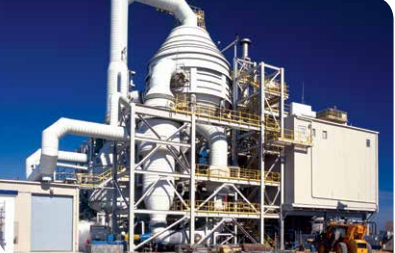Veolia’s MVR Salt Crystallization System Chosen by China Salt
Published on by Water Network Research, Official research team of The Water Network in Business
Veolia Water Technologies’ well-proven crystallization system will be used to process un-treated sodium chloride feed brine, producing 800,000 tons per annum of 99.85%, or better, NaCl.

This food grade salt produced from the sodium chloride brine will then be sold all over China as everyday table salt and so has to comply with the cleanliness and hygiene standards of the industry. As well as these hygiene standards, the optimization of energy use was also especially important for the client. No extra steam is needed to be produced for the whole plant to function which maximizes plant availability.
“As part of our mission, we support the economic growth of our industrial customers while reducing their ecological footprint. Our state-of-the-art technologies are designed with that in mind and in this case support our client’s strategic target to optimize their energy efficiency.
The patented MVR technology is an extension of the design using Veolia’s HPD® Evaporation and Crystallization technology at multiple installations around the world and this extensive list of references combined with our commitment to sustainable development enabled Veolia to have a competitive advantage in delivering the best solution for the client”, commented Klaus Andersen, CEO of Veolia Water Technologies, Inc.
Energy efficient salt crystallizer
To achieve Hebei China Salt’s desired project objectives, Veolia has designed a salt crystallizer which utilizes a single vapor body, two heater recirculation loop arrangement with motive energy for evaporation supplied by Mechanical Vapor Recompression (MVR). Vapor compression will be provided using single stage, centrifugal compressors.
Crystallized salt will be washed in an elutriation leg and thickened in a head tank. The thickened slurry will then be directed to a bank of pusher centrifuges where the product salt will be further washed and dewatered. The wet salt cake will then be transferred to the dryer. Heat recovered from the distillate is used to heat the incoming brine to minimize energy consumption. The heat recovery exchangers are arranged to deal with the character of un-treated brine.
Read more: Veolia
Media
Taxonomy
- Treatment
- Treatment Methods
- Technology
- Brine Discharge Modeling & Analysis
- Waste Management